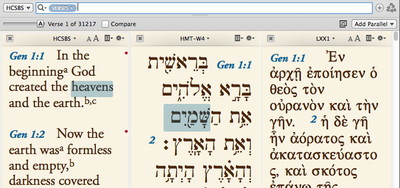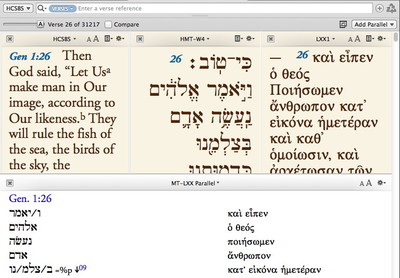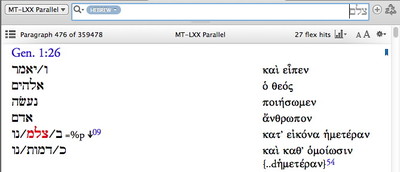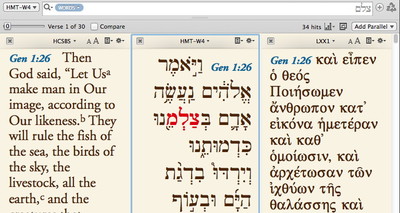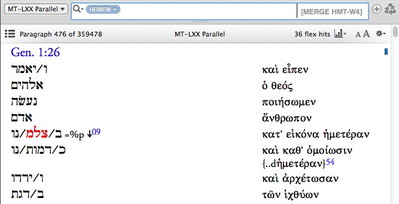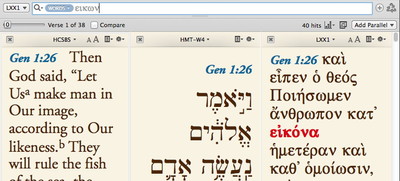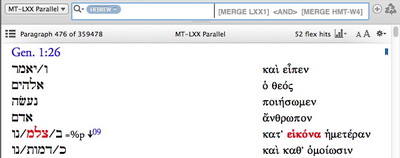When you display the Hebrew Bible and Greek Septuagint in parallel panes of a Search tab, the parallel verses are displayed side-by-side, but it is not immediately apparent which Hebrew word a particular Greek word is translating. For example, in Genesis 1:1, the Greek word ouranon corresponds to the Hebrew word Shamaim. I can see that by dragging my cursor over each word in the Hebrew and Greek to find out which words mean “heaven,” but other than that, there is no easy way to see the relationships between these two texts.
That’s where a specialized Reference Tool called the MT-LXX Parallel comes in. This tool, developed by renowned Hebrew and Septuagint scholars, places each word or phrase of the Masoretic Hebrew text in parallel with the corresponding Greek words from the Septuagint.
One obvious use of the MT-LXX Parallel is to place it in parallel with the text of the Hebrew Bible and Greek Septuagint. As a reference tool, the MT-LXX Parallel will automatically scroll along with the biblical text, enabling you to see word-by-word connections for each verse.
For example, if we scroll to Genesis 1:26, we can see that the Hebrew word for “image” (tselem) is translated by the Greek eikon (from which we get the word “icon”).
To search the MT-LXX Parallel, we need to view it in a separate Tool tab. As with other Tools, the MT-LXX Parallel is divided into different fields of content. To search for all occurrences of the Hebrew word tselem, our natural impulse would be to set the search field to Hebrew and enter that lexical form.
Since the Hebrew text of the MT-LXX is not grammatically tagged, our search only finds the 27 instances when tselem appears in that exact form. When we search for tselem in a tagged Hebrew Bible, we get 34 hits because every inflection of tselem is found.
Fortunately, we can overcome this limitation of the MT-LXX Parallel by piggy-backing on the tagging of the Hebrew Bible. We do this through the use of an advanced search command called the MERGE command. By merging the MT-LXX Parallel with the tab containing the BHS-W4, the results of my lexical search of the Hebrew Bible are reflected in the MT/LXX. Notice that now the MT/LXX displays 36 occurrences of tselem. (The extra two occurrences are notes or reconstructions in the MT-LXX database.)
Using the MERGE command in this way makes for some very powerful searches. For example, suppose I want to find every place where the LXX translates the Hebrew word tselem by some form of the word eikon. To do this, I’ll open a new Search tab containing the Septuagint, and I’ll do a search for eikon. This search finds 40 hits.
To see which of these occurrences of eikon correspond to the Hebrew word tselem, I’ll go back to my MT-LXX Parallel, add an AND command, and then add a second MERGE command. This time, I’ll Merge with the tab containing the LXX.
This search turns up 52 hits, and I can see that both the Hebrew word tselem and the Greek word eikon are highlighted. Divide the number of hits by two, and we end up with around 26 places where tselem is translated as eikon.
I hope you can see from this brief example how powerful the MT-LXX Parallel database is. In my next post, I’ll examine these results in more detail and offer a few more tips for using this powerful resource.


